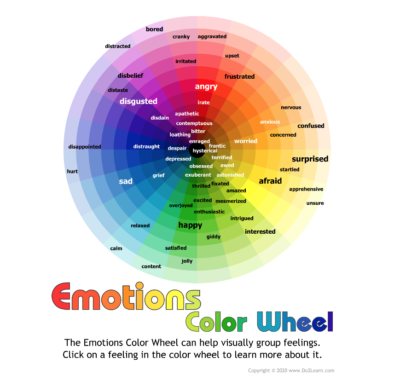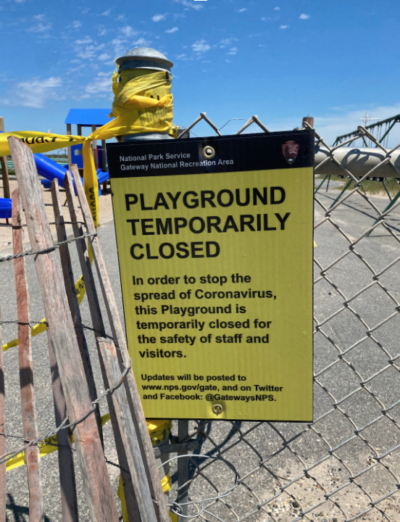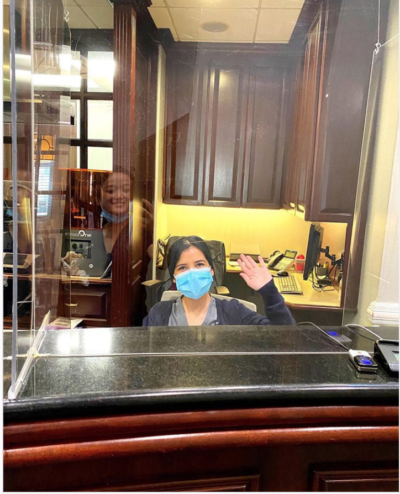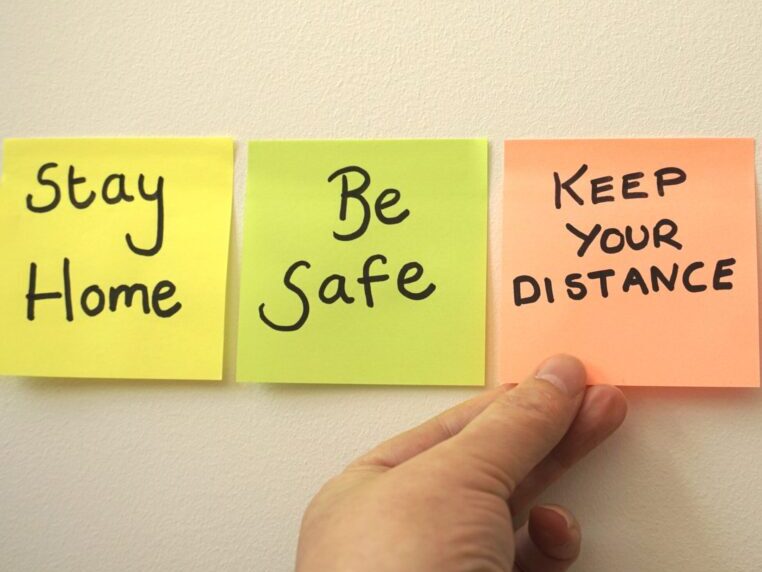This post was contributed by Rebecca Taskin, a licensed New York City based speech and language pathologist and founder of Speech in the City. She specializes in brain based disorders including therapy in the areas of speech, cognitive and feeding disorders.
None of us really know how the aftermath of COVID-19 will affect our lives. That in itself is hard because we want to communicate clear and meaningful messages to our children, but it’s often difficult to know how to do so in an age-appropriate way.
Much of the fear that parents often feel about COVID-19 is figuring out how to frame it to our children. I suggest trying to be as transparent as possible with your messaging in a way that empowers your child. Your explanations should be as consistent as possible with what is going on from the trusted sources you turn to. That way if your child hears anything different, they can 1) self advocate 2) ask you to explain and 3) have trusted messages to gather a response and communicate with you any further questions they might have as a result of anything misleading they heard. It is more important than ever that we are role models for our kids and help guide them through this in a way that strengthens and supports them.
It is important to help children understand their feelings around COVID-19. Create open lines of dialogue so they feel free to ask you about any topics that may not make sense to them. I really like this chart to help kids develop and understand the variety of feelings they may be having during this time.

We do not want our children to think their friends are the enemy. Rather, we want them to continue to develop healthy relationships with their peers in a way that is safe and appropriate. At this point, that means allowing them time to have virtual playdates and freetime to play with their friends online. That way, they are not isolated from their support system and can continue to maintain their social lives once things are lifted. Because this is the beginning of our kids’ social lives and because their social skills are in full development, we want to make sure they are informed and positive. We also want them to know they always have trusted communication with their parents that will help them feel ready to take on many of these new changes.
For example, in looking at this New York City park sign, notice how it says “temporarily.” When we walk by the park with our children we don’t want to say, “Oh, the playground is still closed.” We want to re-shift our thinking and say something like, “Oh, the playground is temporarily closed, that means just for a short time.” You want to frame their thought that right now things are temporarily closed, but will reopen.

We have already seen some of the precautionary measures that the community and city is taking to prevent face to face contact. Many pharmacies have protective barriers up and so do the checkout clerks at the grocery store. Again, we have to be cautious of the messages we are providing around these new updates. Instead of saying, “Oh my goodness, look what they did,” we need to reframe our own thinking to help them. A better option would be to say, “Look everyone is doing their part to keep us safe.” Allowing your child to see these safeguards will help them understand why they are there. I have noticed that the doctors offices around New York City are posting their office re-designs. Check them out and show them to your child. Set your child up for success and show them the images before they enter these new environments so they are not startled or surprised.

It is important to have a “What to do if” mindset in place so they know they will be okay no matter what happens and feel confident. We want to remind our kids that even if unexpected things happen they WILL BE OK. For our younger kids we like to present these ideas in “social stories” which are stories like this. For our older kids, I suggest talking it out through discussing topics such as:
-What to do if someone sneezes on me
-What do I do if someone gets too close to me
-What do I do if someone wants to share their lunch with me
-What do I do if my I feel sick
-What do I do if I see someone who looks sick
-What do I do if someone tells me something different than my parents
Sometimes good things happen from change, despite change coming from something that we didn’t see coming. We need our kids to know that although things might be different, everything will be okay. Here is a nice video example of that lesson to share with your child. We never know what the outcome of things will be until we are brave enough to try.
Rebecca Taskin MS CCC SLP TSSLD
speechinthecity.com
